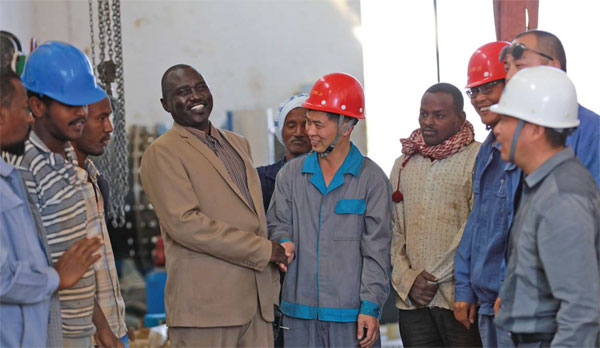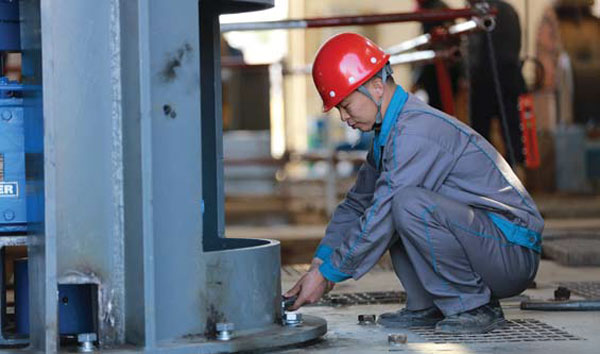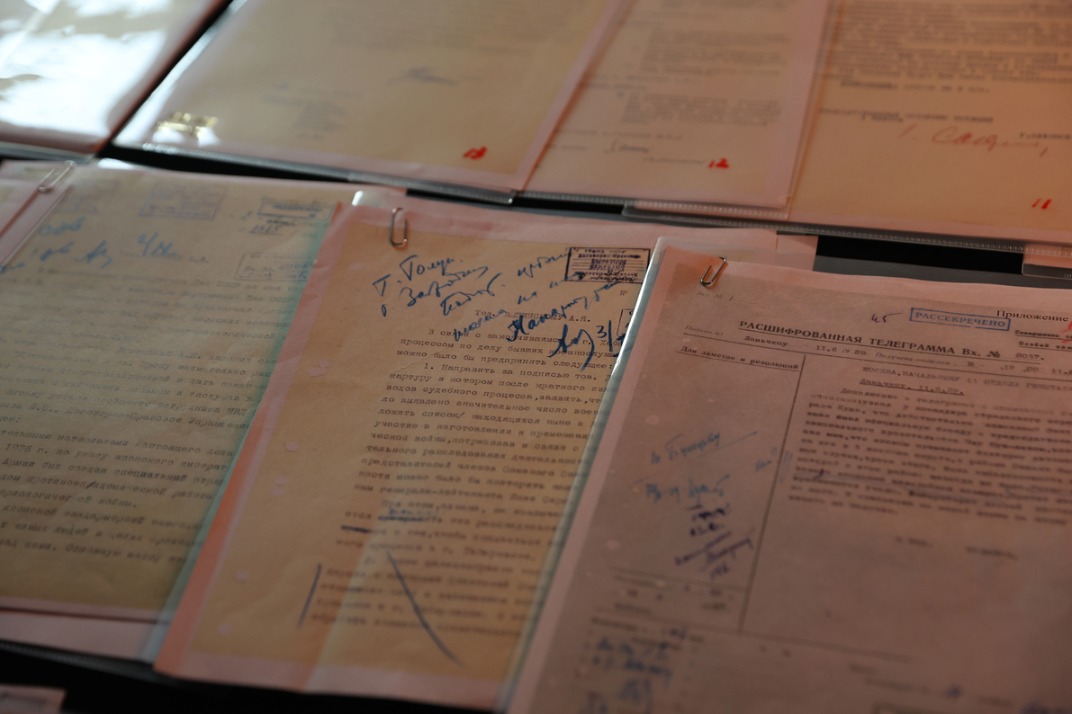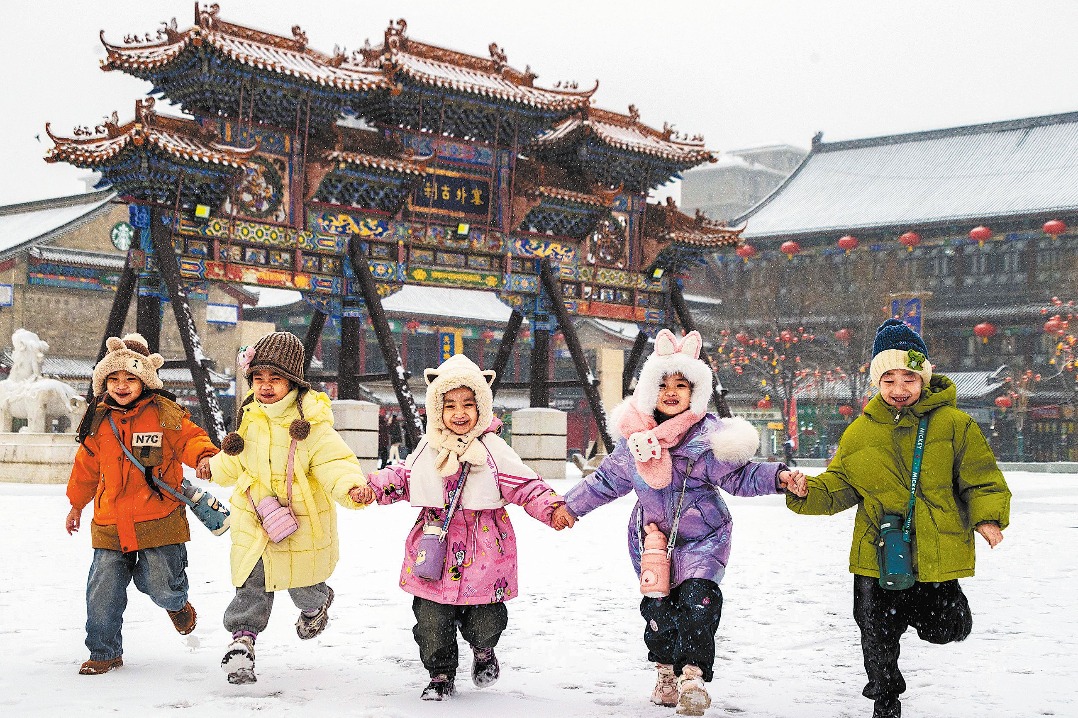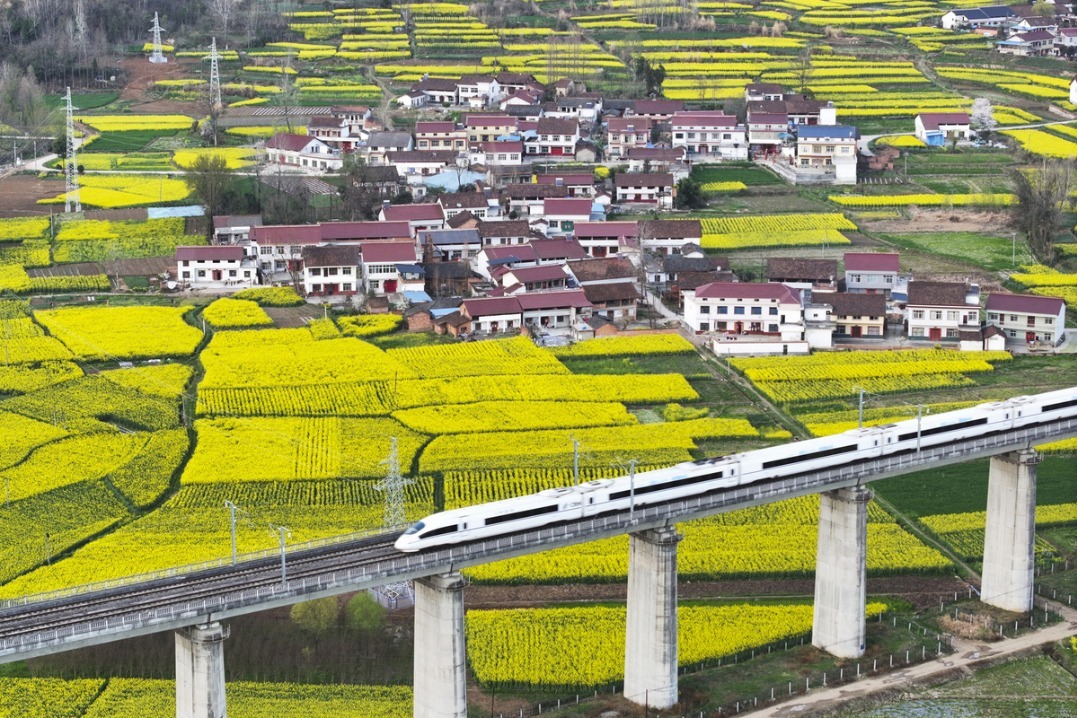Pumping new life into the desert

Project brings drinking water and irrigation for crops to parched areas of northern Sudan
Deep in the Nubian Desert in the northern part of Sudan, a Chinese company is helping to provide healthy drinking water and crop irrigation from the River Nile.
China International Water and Electric Corporation started work on constructing the Meroe Dam in the northern African country in July 2003 and completed the whole project in five and a half years.
The dam is the second largest hydroelectric project in the main course of River Nile and the longest dam in the world, with the total length of 9.8 kilometers.
| Chinese workers discussed about technical issues with Sudanese colleagues. Photos by Ren Qi / China Daily |
| Peng Zhiyuan from Hunan province works on the pump station for months. He is responsible for the install of pump machine. |
Since February 2015, a new pumping station has been operated by the same company, along with Sinohydro Group, taking water further afield.
Wang Hongqiang, manager of pumping station project, says there are five pumps in the station, which is built on the river bank.
A single pump can deliver 2.4 cubic meters of water per second and there are at least three in operation every day, delivering 7.2 cubic meters of water per second to villages and homes.
Sudan is the third largest country in Africa, covering 1.9 million square kilometers. The economic and cultural center is in the north, where water is scarce.
"Northern Sudan is covered by the Nubian Desert, which is very dry and short of water," Wang says. "You only see plants near the water, not in the desert and villages far from the Nile. Pumping river water is the only way to develop the local agricultural industry."
Regarded as the humanity's mother river, the Nile has been the most important source of drinking and irrigation water for Sudanese people for thousands of years. The northern section flows north almost entirely through the Sudanese Nubian Desert towards Egypt.
Egyptian civilization and Sudanese kingdoms have depended on it since ancient times.
However, because of the desert conditions, the Nile brings little rain to the area. Until recently, most Sudanese who did not live near the river had to carry water to their villages.
"Back in the old days, my ancestors needed to walk for a whole day to the waterway to bring back one barrel of water," says Ali Mustafa, a 54-year-old Sudanese man who lives 35 kilometers away from the river in Meroe district. "Later we drove a pickup for hours to fetch water but now, thanks to the pumping station, we can enjoy fresh Nile water sitting at home."
The pumping station provides so many benefits to nearby villagers that more than 10,000 attended the opening ceremony.
Wang says work on the project is expected to be complete by the summer this year. The construction process is much slower than for projects in China, because resources and conditions in Sudan are much worse.
"Still, the speed is acceptable and construction performance is beyond our expectations," Wang says.
Peng Zhiyuan, a young worker from Hunan province, has been working in Sudan for several months. His job is to install a huge pumping system, which is more than 8 meters high.
Although it's the first time Peng has worked abroad, he has already adapted to working near the Nile. He says his Sudanese colleagues are very friendly and helpful with both the job and daily life.
However, there are many difficulties working in the desert, where there are few inhabitants. It takes about four hours to drive to the capital Khartoum to buy the necessities of life.
"Of course my family worried a lot about my safety and living conditions before I came to Africa, but I think it's quite safe here thanks to the great reputation of China in Sudan," says Peng.
Since the start of the project more than 40 Chinese workers have worked on the site, most from Shaanxi, Hunan, Sichuan and Shandong provinces.
Most of the basic infrastructure for the project was created by Chinese companies.
The Roseires Dam is a dam heightening project being carried out with Chinese aid by China International Water and Electric Corporation. It is on the Blue Nile and, with the maximum height of 68 meters, the project is worth $400 million.
renqi@chinadaily.com.cn
(China Daily Africa Weekly 01/20/2017 page27)
Today's Top News
- Evidence mounts of Japan's wartime atrocities
- Gunmen kill 11, wound many on Sydney beach
- Study finds Earth's deep water reservoirs
- China remembers victims of Nanjing Massacre 88 years on
- Philippines' provocations will avail it nothing: China Daily editorial
- China steps up financial support to spur consumption
















